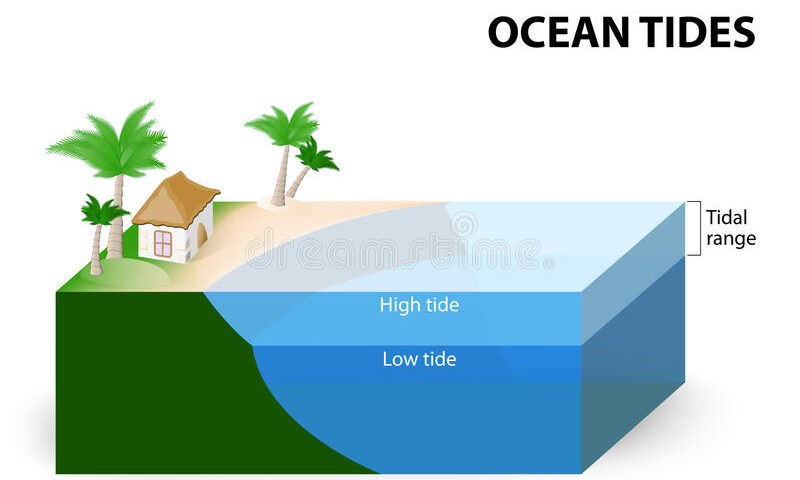Twice a day, the sea rises up the shore then falls back again
in tides. However, the effect is only local. While the tide
is rising in one place, it is falling in another, as huge forces are
exerted on the vast mass of water in the oceans.
Tides fall in one place and rise in another because the water in
the oceans is moving around, flowing this way and that across the
face of the planet, so that it piles up in one place, making the tide
flow in, and drops away in another, making the tide ebb. It is this
continual ebb and flow of ocean water that makes many simple
explanations of why tides occur misleading or wrong.
Month: July 2022
About circulating Water in the oceans
Ocean circulation is driven by persistent winds at the surface
and density differences lower down. The pattern of wind-surface
currents is dominated by five great loops or ‘gyres’: two in the
Atlantic, two in the Pacific, and a fifth in the Indian Ocean.
Pulled by the prevailing winds, they are curled into loops firstly
by running up against land barriers and secondly by the effect
of the Earth’s rotation.
About ocean Acidification
With all the attention given to global warming, a second potentially
devastating effect of the human addition of carbon dioxide to the air has
rather slipped under the radar – the increasing acidity of the oceans.
About changing Sea Levels
The heights of mountains and the altitude of aircraft
are often given as ‘above sea level’, as if the level of the sea
was permanently fixed. Yet even in the present day, it is very
difficult to pinpoint the level of the sea accurately. The sea moves
continuously, not only with the tides, but with wind, waves, and
currents, and even daily changes in temperature and chemistry. In
the UK, heights are measured relative to the Ordnance Datum, an
average achieved by year upon year of measurements of the mean
sea level shown by tide gauges at particular sites.
Earth’s Broken Shell
The division of the world into land and sea seems so
natural and timeless that it is hard to imagine it any other
way. Yet the very existence of continents and oceans is unique to
planet Earth, and their behaviour is even more remarkable.
Early in the 20th century, a German meteorologist named
Alfred Wegener noted the extraordinary way coastlines of
continents seemed to match across the oceans, like the separated
pieces of a vast jigsaw. He suggested that this was because the
continents were once joined together and the oceans between
them opened up as they split apart and drifted around the
world over many millions of years.





